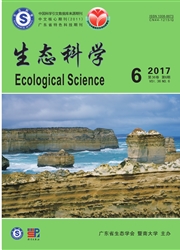

 中文摘要:
中文摘要:
重建水库建库以来的沉积环境演变过程对水库管理具有重要意义。以流溪河水库4个沉积物柱状样为研究对象,分析沉积物的粒级组成及粒度参数特征。结果显示:(1)流溪河水库自建库以来,沉积速率经历了"高—低—高—低"的演变规律;(2)河流是水库的主要沉积物来源,沿入库口至大坝方向,水动力逐渐减弱,沉积颗粒呈现"由粗到细"的空间变化特征;(3)入库口(S3)主要受河流水动力作用影响;库湾区(S8)远离入库口,反映了稳定的湖心沉积环境;过渡区(S4和S6)受河流搬运营力、再沉积作用及库区消落带侵蚀的共同作用,呈现由"双峰向单峰"的变化,反映了上述三种主要营力互为消长的演变过程。
 英文摘要:
英文摘要:
Reconstruction of depositional history is of great importance to reservoir management. Grain size distributions and their parameters in sediments of 4 cores from the Liuxihe Reservoir were studied to infer the sedimentary history over the past 60 years. The results are as follow:(1) Sedimentation rates display a "high-low-high-low" variation pattern over the maturation process of the reservoir.(2) Fluvial transportation made the largest contribution to sediments. The grain size decreased from river entrance to the dam, which indicates a weakening in hydrodynamic force and carrying capacity of the water flow.(3) Gain size pattern in riverine zone(e.g., Site S3) is mainly controlled by hydrodynamics of the inflowing river; while in lacustrine zone where water flow is weak(e.g., Site S8), deposition of suspended particles dominates the sedimentation process. Sediments from the transitional zone(Sites S4 and S6) showed a change in size pattern from unimodal to dual modal, which possibly responded to a combination of influences by river transportation, surface soil reworking and erosion of water fluctuation zone, as well as the temporal variation in each agent.
 同期刊论文项目
同期刊论文项目
 同项目期刊论文
同项目期刊论文
 How important are trophic state, macrophyte and fish population effects on cladoceran community? A s
How important are trophic state, macrophyte and fish population effects on cladoceran community? A s 期刊信息
期刊信息
